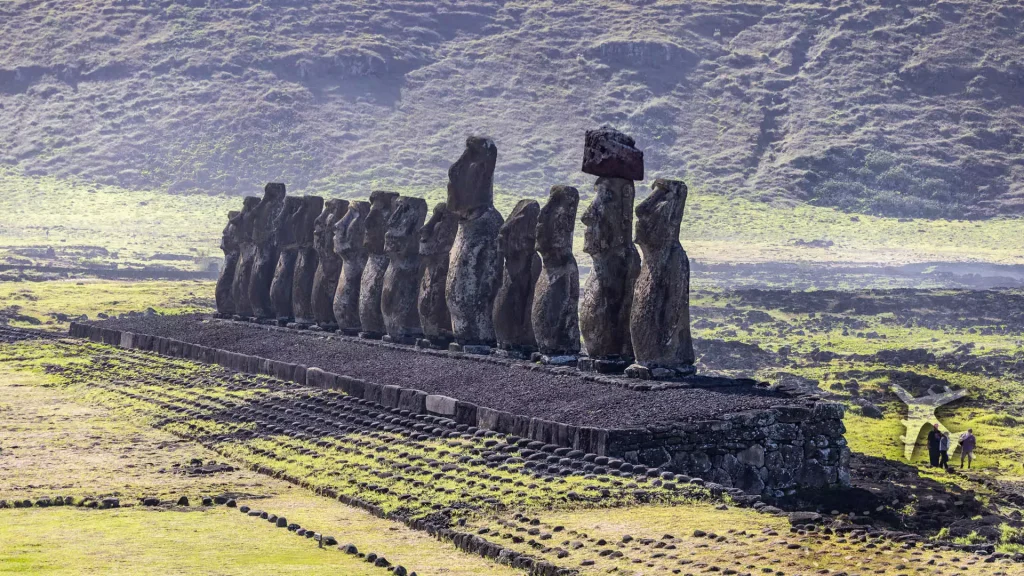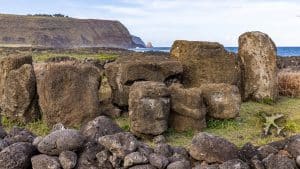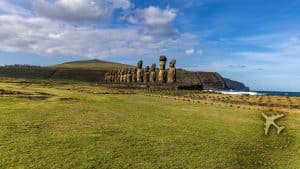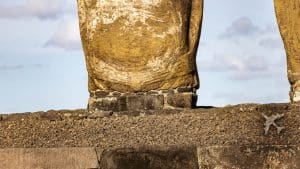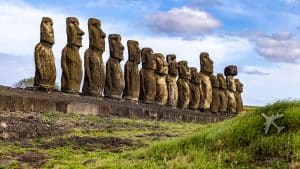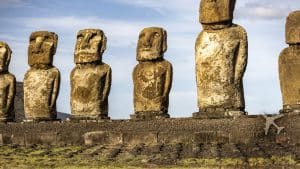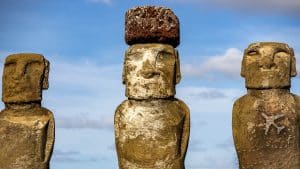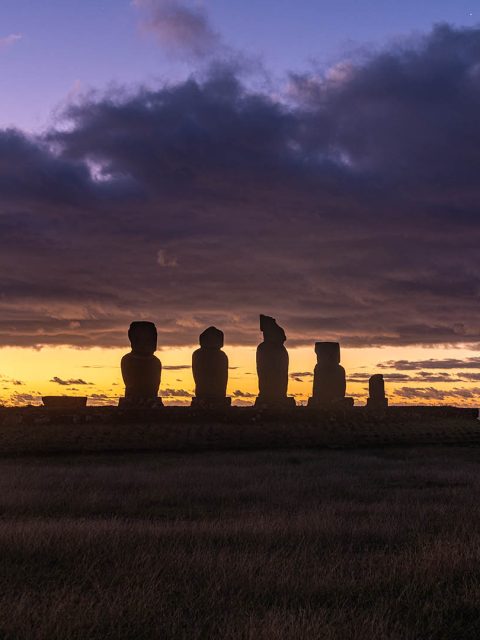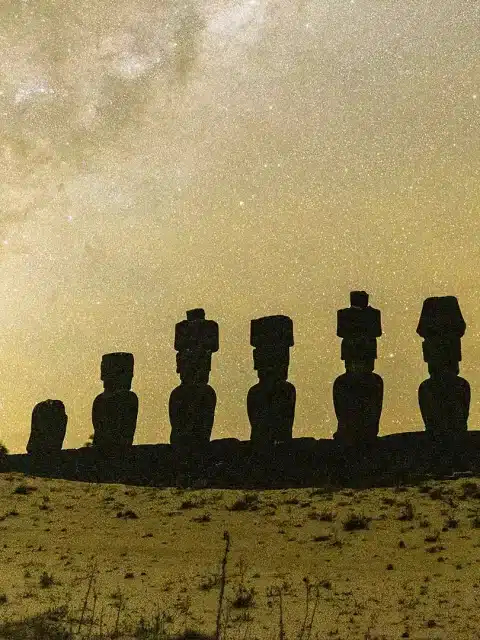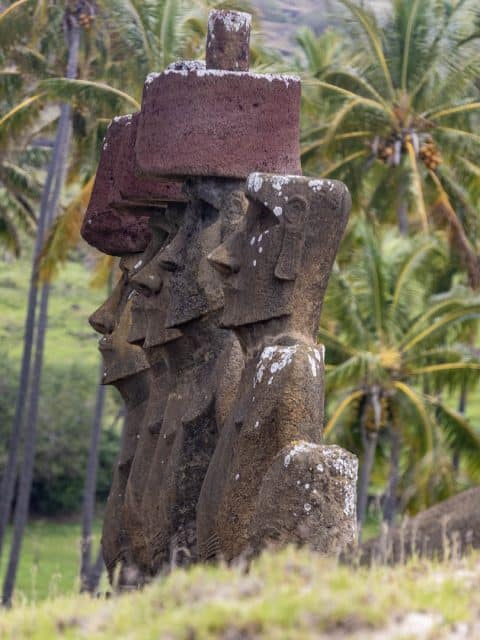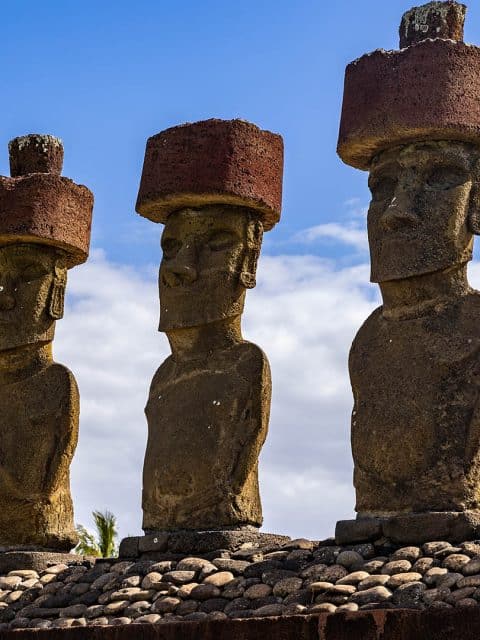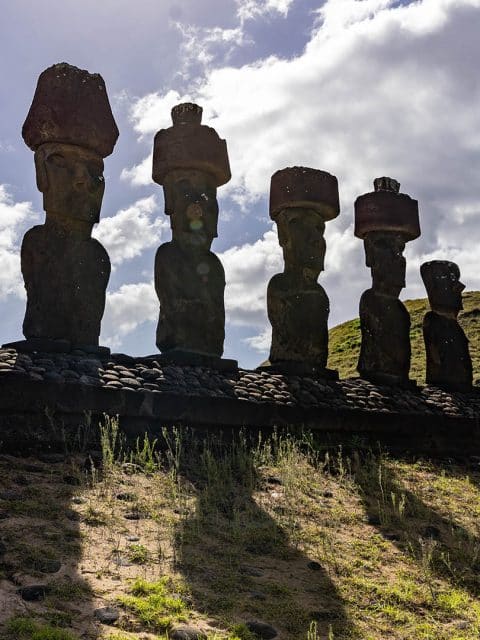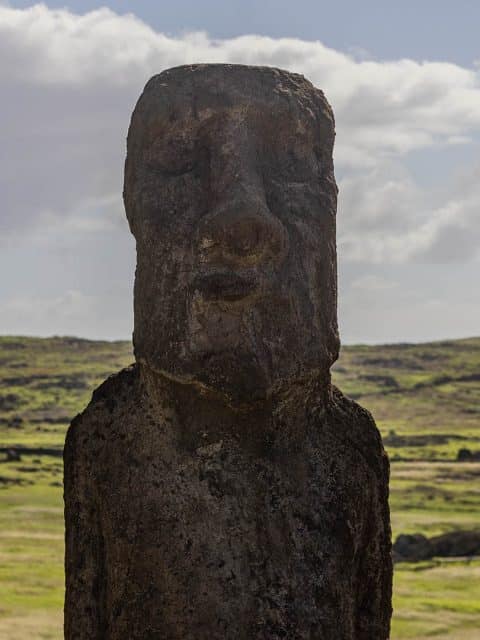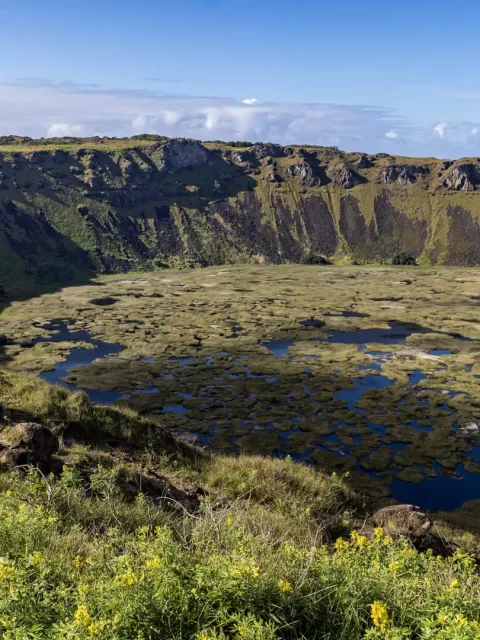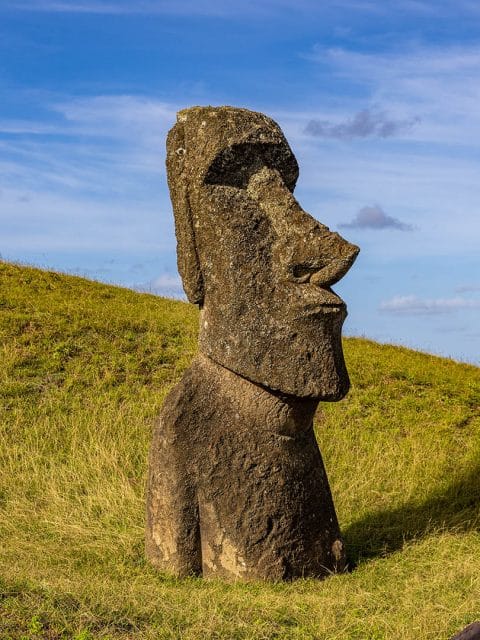Ahu Tongariki: Preserving the Legacy of the Rapa Nui
Immerse yourself in the mystical allure of Ahu Tongariki on Easter Island, where towering moai statues stand guard over a captivating landscape, inviting you to witness the ancient marvels and uncover the secrets of this extraordinary Polynesian civilization.
Ahu Tongariki is one of the most recognizable landmarks on Easter Island. Its captivating history and sheer magnificence are a must-see destination when visiting. In addition, Ahu Tongariki is one of the most impressive cultural and archaeological sites on the island, boasting 15 massive stone statues, known as moai, that stand tall and proud against the backdrop of the Pacific Ocean.
The site was once Easter Island’s political and ceremonial center, with the moai serving as ancestral figures representing the island’s deified ancestors. However, in the 17th and 18th centuries, the moai were toppled during internal conflicts, and the site was left in ruins. Visiting Ahu Tongariki allows visitors to witness the incredible restoration efforts undertaken to resurrect and re-erect these colossal statues, showcasing the island’s cultural heritage and the dedication of archaeologists and locals to preserving its history.
At the base of the towering moai, visitors can’t help but be captivated by their imposing presence and intricate craftsmanship. The sheer scale of the statues, some weighing up to 80 tons, leaves visitors marveling at the engineering skills and cultural significance embedded in each sculpture. The setting of Ahu Tongariki, with the statues aligned along a ceremonial platform, creates a powerful and humbling atmosphere that connects visitors to the island’s ancient past.
Through the viewfinder
Ahu Tongariki Uncensored
Located on the southeastern coast of Easter Island, the site overlooks the sparkling blue waters of the Pacific Ocean and provides a stunning backdrop for memorable photographs. Unfortunately, this peaceful location was victim to the 1960 Valdivia earthquake in Chile, which generated a Tsunami throughout the Pacific Ocean, wreaking havoc at the site. A 10-meter (30-foot) high Tsunami crashed into Ahu Tongariki, toppling the moai and dragging them almost 1 kilometer (2/3 mile) inland. Restoration efforts began in 1991 through the support of UNESCO to restore the site to its original splendor.
The one unique item that left me in awe was the size of the moai. The scale in pictures is easy to overlook. However, the immense weight and logistical challenges of placing these gargantuan statues thousands of years ago is nothing less than impressive.
Visitors can also take a leisurely stroll along the coast, exploring the rugged coastline and enjoying the serene beauty of the island’s natural environment. The combination of archaeological splendor and scenic vistas makes this an unforgettable destination that captures the imagination and leaves a lasting impression.
Frequently Asked Questions
It took almost 500 years for Ahu Tongariki to be built, sometime between 1000-1500 A.D.
Ahu Tongariki was the ceremonial center of the town. The pedestal with the 15 moai was the central location in the surrounding town.
Located on the Northeast side of Easter Island, it is easily reachable via car.
The protected natural park requires a permit that is USD $80 for foreign visitors. Additionally, a local guide must accompany visitors into the national park.
Everything you need to know before you visit Ahu Tongariki
CURRENT WEATHER
scattered clouds
AIR QUALITY
Moderate
GPS COORDINATIONS
-27.1258, -109.2770
HIGH SEASON (MOST EXPENSIVE)
December – March
LOW SEASON (LEAST EXPENSIVE)
April – November


